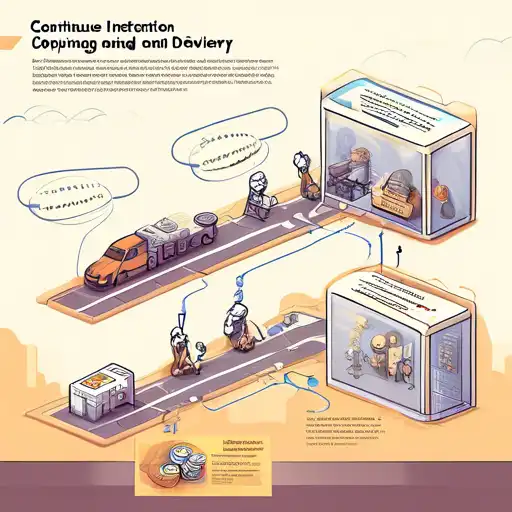What is Continuous Integration and Delivery?
Continuous Integration (CI) and Continuous Delivery (CD) are pivotal practices in the modern software development lifecycle, aimed at improving software quality and delivery speed. CI/CD automates the integration of code changes from multiple contributors into a single software project, ensuring that the software can be reliably released at any time.
The Benefits of CI/CD
Adopting CI/CD brings numerous benefits to development teams, including:
- Reduced integration problems
- Faster release cycles
- Higher quality software
- Improved team productivity
By integrating regularly, developers can detect errors quickly, and by delivering continuously, teams can ensure that the software is always in a release-ready state.
How Does Continuous Integration Work?
Continuous Integration involves developers merging their changes back to the main branch as often as possible. Each merge triggers an automated build and test sequence, which verifies that the new code doesn’t break the existing codebase.
Key Components of CI
- Version Control System (e.g., Git)
- Automated Build Tools (e.g., Jenkins, Travis CI)
- Automated Testing Frameworks
This process encourages developers to share their code and unit tests by merging their changes into a shared version control repository after every small task completion.
Understanding Continuous Delivery
Continuous Delivery extends Continuous Integration by deploying all code changes to a testing environment and/or production environment after the build stage. This means that on top of automated testing, automated release processes are also in place, allowing for a swift and reliable deployment.
CD Pipeline Stages
- Code Integration and Build
- Automated Testing
- Deployment to Staging
- Production Deployment
With CD, teams can ensure that the software is always ready to go to production, which significantly reduces the time to market for new features and fixes.
Best Practices for Implementing CI/CD
To successfully implement CI/CD, teams should adhere to the following best practices:
- Maintain a single source repository
- Automate the build process
- Make the build self-testing
- Keep the build fast
- Test in a clone of the production environment
- Make it easy to get the latest deliverables
- Ensure everyone can see what’s happening
- Automate deployment
By following these practices, teams can maximize the benefits of CI/CD, leading to more efficient development cycles and higher quality software products.
Conclusion
Continuous Integration and Delivery are essential practices for any team looking to improve their software development process. By automating the integration and delivery processes, teams can reduce errors, speed up development, and ensure that their software is always ready for release. Embracing CI/CD is a step towards more agile, efficient, and reliable software development.
For more insights into DevOps practices, explore our guide on essential DevOps tools and how they can enhance your CI/CD pipeline.
